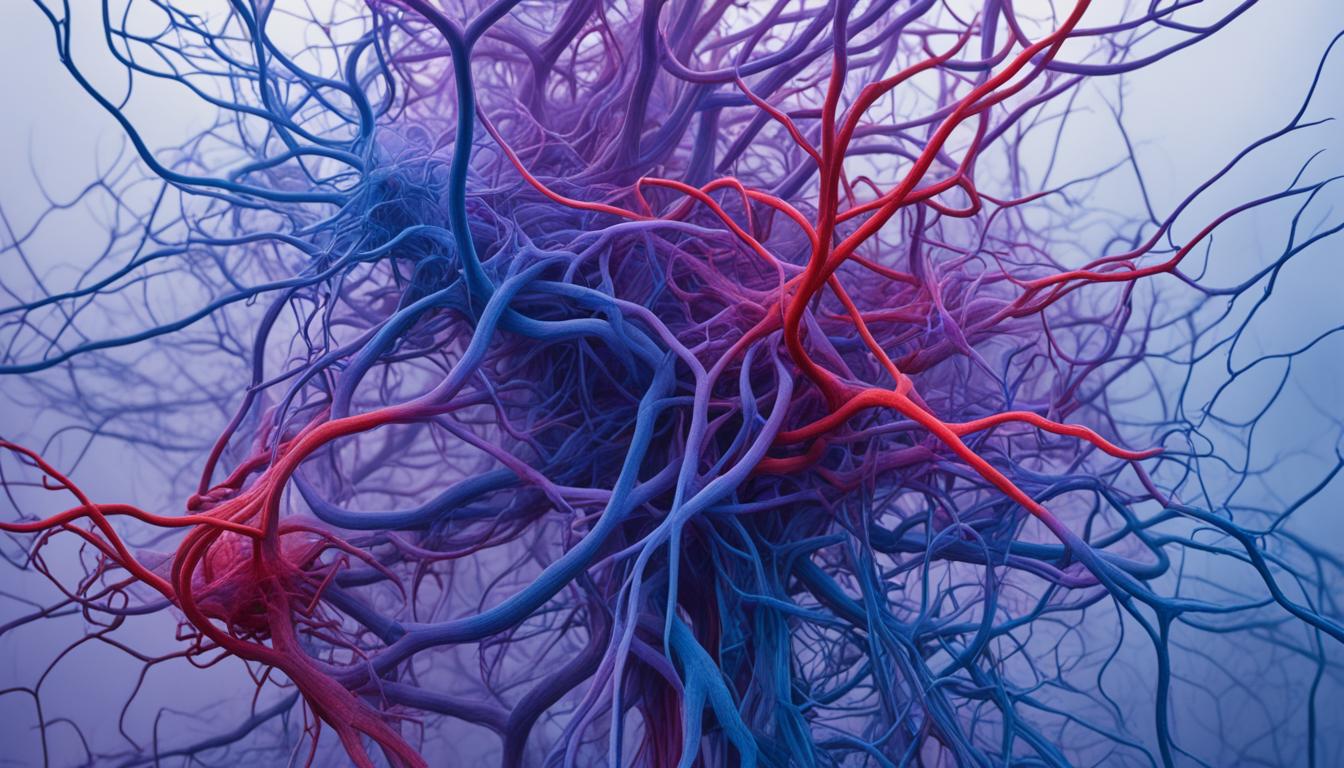Central nervous system vascular malformations are abnormal blood vessel formations in the brain and spinal cord. They come in different types and places, causing seizures, headaches, and problems with sight and movement.
Doctors are not sure exactly why these malformations happen. But they think it’s due to blood vessels not growing right when we are still in the womb. This leads to the formation of these unusual blood vessel patterns.
To find these malformations, doctors do a detailed check-up. They ask about your medical past, do a physical exam, and check how your nerves are working. They’ll also most likely use special pictures like MRI and angiography to see the malformations clearly.
Stem cell treatment offers a new path for helping with these malformations. Stem cells can repair blood vessels, which helps in tissue healing and getting blood flow back to normal. There’s ongoing study on how well stem cell therapy could work for these issues.
Key takeaways:
- Central nervous system vascular malformations occur when blood vessels in the brain and spinal cord don’t develop correctly.
- Symptoms depend on the malformation’s type and location. Common signs include seizures, headaches, problems with nerves, and sight problems.
- The reasons for these malformations are still not completely known. But, experts think it’s because of unusual vascular growth before we are born.
- Diagnosis needs a full health history, a check-up, neurological tests, and special images like MRI and angiography.
- Stem cell therapy is showing hope for repairing damaged blood vessels in these malformations. This could mean better healing for affected tissues.
Types and Treatment Options for Central Nervous System Vascular Malformations
Central nervous system vascular malformations come in various types. These include cavernous malformations, arteriovenous malformations, and venous malformations. The treatment choice depends on the malformation’s type, size, location, and symptoms.
For malformations that are accessible and cause significant issues, surgery is often a top choice. This can include resection or excision to remove the abnormal vessels. It helps relieve pressure on the brain and lower the risk of issues.
Another approach is embolization, which is less invasive. It involves accessing and shutting down the blood vessels that feed the malformation. This procedure helps lower the risk of bleeding and reduce symptoms from abnormal blood flow.
If surgery is not a good option, radiosurgery might be considered. This treatment uses focused radiation to make the malformation shrink. It helps lower the chances of bleeding or other problems.
When choosing treatment, it’s vital to discuss all options with a specialist. A neurosurgeon or interventional neuroradiologist who knows about these malformations can offer the best advice.
Treatment Options Overview
| Treatment Option | Description |
|---|---|
| Surgical Treatment | Removal of abnormal blood vessels through resection or excision. |
| Embolization | Minimally invasive procedure to block or close off the blood vessels feeding the malformation. |
| Radiosurgery | Delivery of targeted radiation to shrink the malformation and reduce the risk of complications. |
Potential of Stem Cell Therapy in the Treatment of Central Nervous System Vascular Malformations
Stem cell therapy is showing great promise in dealing with central nervous system vascular malformations. It’s a new hope for many patients. Stem cells are special because they can renew and fix damaged blood vessels, addressing the main problem directly.
Research has proved that stem cells can change into different cell forms. For instance, they can become endothelial cells, which are the cells lining blood vessels. This feature allows for the possibility of using stem cells to better regrow blood vessels and help fix tissues hurt by these malformations.
Trials and studies with animal models have also backed up the benefits of stem cell transplantation for repairing tissues. But, we must remember that using stem cell therapy for these issues is still in its early research stages.
More research is vital to know if stem cell therapy is safe and helpful for humans with these malformations. This further work will show us more about the good and the not-so-good of this new treatment approach.

